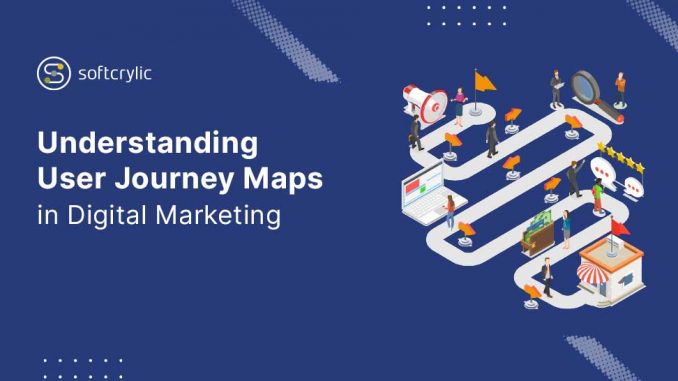
Success in digital marketing often depends on understanding the user experience. The ways in which a user navigates and interacts with a website can illuminate the strengths and weaknesses of site performance. So, how can you identify those major points when a user exits a page? Or how can you identify the key differences between an outcome that led to the purchase of a product compared to those that abandoned the cart? Ultimately the question becomes, how can you tailor the user experience to meet expectations?
A User Journey Map might be the answer.
What is a User Journey Map?
A user journey map is a series of interactions a user makes from the first moment of engagement to a specific outcome like purchasing a product or service, subscribing to a newsletter, enrolling in a loyalty program, or any conversion event of interest. Outlining the user path can help identify key touchpoints that are drivers or barriers to the flow of the website. Touchpoints are interactions that significantly influence user behavior and can occur at any moment of the user journey. Incorporating different types of touchpoints like website pages, marketing content, and social channels into a single view simplifies the complex series of interactions and makes it easy to relate to the needs of a user. The infographic below is a high-level view of a simple user journey map.
How can we optimize the User Journey Map with data?
Data-driven KPIs
Developing a standard set of KPIs that reflects established trends in the data offers the opportunity to not only provide insight on how metrics relate to the user experience but also helps to create a roadmap to reach a specific goal. Leveraging data modeling techniques to establish success criteria for KPIs can illuminate key touchpoints throughout the journey, like creating metrics based on behaviors that seem to drive successful journeys.
Personalization Strategies
Developing persona segments based on data points that describe distinct personas and their unique types of interaction create opportunities to enhance engagement. Personalization strategies can be built to place targeted messaging at the right stage in the user journey map and provide an understanding of how key touchpoints impact certain user segments.
A Quick Approach to Designing the User Journey Map
The Takeway
The user journey map is a storytelling tool that showcases a holistic view of important patterns and trends across multiple user experiences. A closer view of the journey can provide a breakdown of how a single user interacts with your website, highlighting the strengths and weaknesses within each stage of the journey. Developing a simple plan of action will provide a valuable approach that can be used to continuously evolve and transform the intended outcome of user interactions to deliver seamless and enjoyable user experiences. Ultimately, a positive user experience can bring you closer to achieving your business objectives from digital engagement to revenue.
We hope this short introduction to user journey maps has given you a new tool that enhances marketing goals and an understanding of the user experience. If you’d like to implement this approach and need support, or just would like to learn more, contact us at [email protected].

Leave a Reply